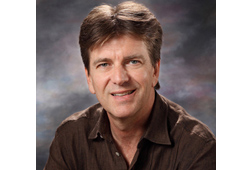Enjoy this lively PSW live chat session with noted sound system designer Craig Janssen of Acoustic Dimensions. It provides an interesting look at what was happening in the world of system design a decade ago, and much of what Craig addresses is timeless, regardless of specific gear.
Moderator: Greetings Craig! And welcome, everyone, to the chat. Let’s get started.
Charles: What analysis packages do you use for designing and tuning systems and why?
Craig: For designing we use a number of packages. We have JBL CADP, EASE, F-Chart (EAW), EV Array show, Renkus ALS and George Augspurger’s custom program. We use different programs to solve different problems. CADP2 for coverage, and array programs to model array behavior. As for “tuning,” we own and use a bunch of stuff.
Mostly I use Smaart and TEF. Mostly Smaart though.It allows us to get quick and accurate measurements from a variety of clusters. We use a Soundweb to switch up to 6 mics. Usually I use 2 computers concurrently, one in measurement mode and one as resultant.
Moderator: We have a couple related follow-up questions…
yamama3000: What is the F-Chart and how does it work?
Craig: F-chart is a custom program from EAW (not sold) which allows extremely accurate predictions of device interaction. It’s a pain to use, but provides tremendous accuracy and allows each device to have filters inserted upon it and adjusted, and then predicts the results.
Brendan: Do you feel Smaart has gained equal acceptance as TEF?
Craig: I think that Smaart has surpassed TEF for industry acceptance by a wide margin.
Michael: So no go on the SIM system? How come?
Craig: As to Meyer SIM, I am supposedly “qualified” (been to training) but can’t justify the cost of the unit. Also it is not nearly as flexible as Smaart for complex system tuning. If I was on the road touring, I would love to have SIM.
lilbob: Which of these (software) in your opinion gives the most accurate actual HF coverage results in both the design and after the install?
Craig: All of the prediction packages (as they relate to sound coverage) are limited by the accuracy of the information provided by the manufacturers. Most info is a little suspect in that until recently has all been in 10 degree increments. Need at least 5 degrees for good accuracy.
Also these programs do not consistently predict interference accurately. The prediction of coverage is being complicated by the use of “shaded array” systems which have (currently) no way of being inserted in modeling programs. EASE and others are working on this.
Charles: What makes SIM better for road use than Smaart? Or are they equal?
Craig: SIM is extremely good at allowing you to use repeatable configurations (called branches) which switch mics on and off and reconfigure the delays. Additionally SIM has 3 separate DSP processors which allow 3 concurrent measurements. Smaart is only 1 processor (unless you use multiple computers, which is clunky at best.)
Tucci: Could you explain your dual computer use within a Smaart measurement rig? I don’t follow what you said.
Craig: Tucci, I assume that you have knowledge of Smaart?
Tucci: Yes, I do
Craig: I use one computer to measure the response. Using same computer I switch to the EQ input and reverse the trace. Thus as I adjust the response, I can’t see the result. I run a second computer so that I can see the response in real time.
Chris Kathman: Have you ever seen the SpectraFoo program ?
Craig: Yes, but only briefly. Not enough to discuss it intelligently….















